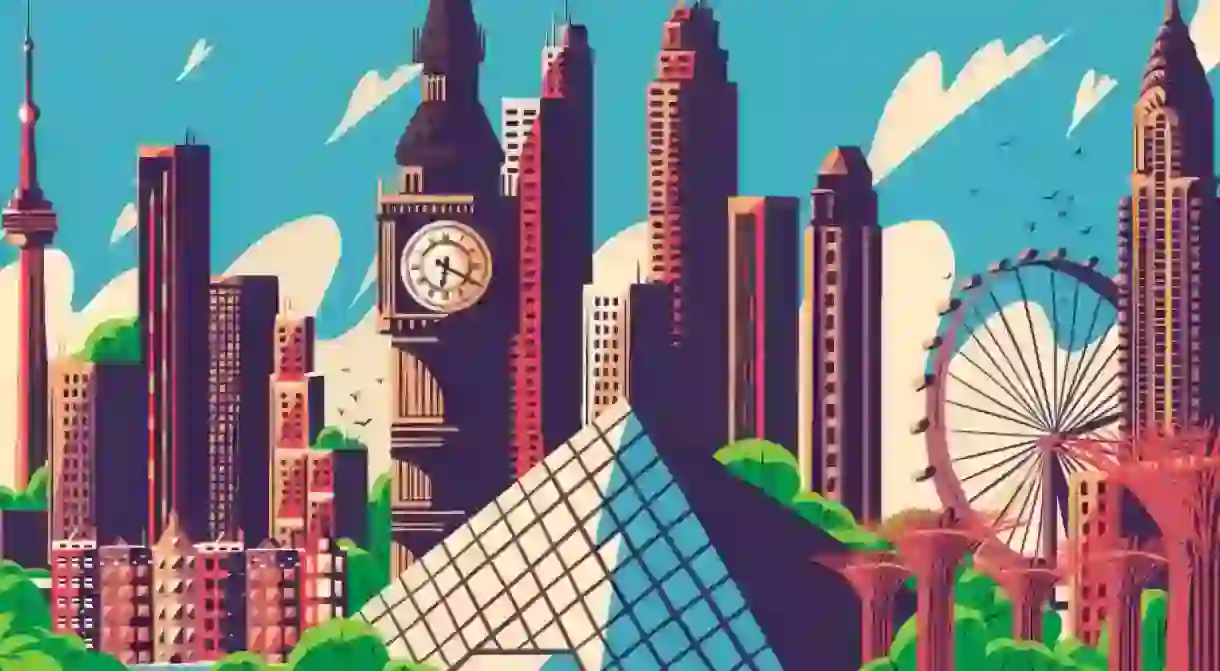The World's 10 Most Multicultural Cities

From London to New York and São Paulo to Singapore, some cities manage to fit the entire world within them. Successive waves of immigrants have all brought with them a piece of their old homes and made a mark on their new, creating diverse cultural environments full of incredible restaurants, festivals and art scenes. Below, Culture Trip looks at some of the most multicultural cities in the world.
Amsterdam

London
Historical Landmark, Architectural Landmark

With a population of 9m and growing, London is home to one of the most ethnically diverse populations in the world. and approximately one-third of Londoners are foreign-born. Even though the official language is English, the lively streets are buzzing with different languages – with immigrants from India to Jamaica and many more, it’s estimated well over 200 are spoken. While many people have chosen London as their home, they still have a love of their own culture and share it in many ways, including delicious food and festivals such as the Notting Hill Carnival.
Los Angeles
Historical Landmark, Architectural Landmark
Located in Southern California, Los Angeles is one of the most multicultural cities in the world, with people from 140 different countries, speaking an estimated 86 different languages. With immigrant-friendly laws, it is a popular place for those seeking a new life in the US. The city also has the distinction of not having a majority population, creating a truly vibrant cultural scene. Los Angeles is overflowing with cultural neighbourhoods, such as Koreatown, Little Tokyo and Boyle Heights, an area popular with the Latino community.
Paris
Historical Landmark, Architectural Landmark

While immigration is a hot topic in France (as it is elsewhere), there is no doubt that Paris has a diverse group of global cultures. In the spirit of equality, French law forbids any questions about ethnicity on censuses, making it difficult to determine the exact number of foreigners living here. However, independent surveys put it at 14%-20%, with the majority coming from outside the EU. Visitors will find many dynamic neighbourhoods in Paris. For example, the quartier chinois (Chinatown) in the 13th arrondissement is a lively community of several Asian cultures while the eclectic Belleville (10th, 11th, 19th, and 20th arrondissements) is a multicultural beauty made up of African, Jewish and Asian ethnicities.
New York City
Architectural Landmark

San Francisco
Historical Landmark, Architectural Landmark

Another hub of Californian multiculturalism, San Francisco is smaller than many of the other cities mentioned thus far, but that doesn’t mean it’s any less cosmopolitan. Many immigrants call this 49-square-mile city home, with the largest group originating from China. Others come from places such as Germany, Italy, Mexico and India. The city is dotted with vibrant neighborhoods, including Chinatown, the Mission District, and North Beach and is also known for celebrating its multicultural roots through various festivals and events throughout the year. Highlights include the Chinese New Year Festival and Parade, which has been named at one of the top ten parades in the world, and the Ethnic Dance Festival, a celebration of the diverse Bay-area communities through dance.
São Paulo
Historical Landmark, Architectural Landmark
Located in southeastern Brazil, São Paulo – commonly known as Sampa to locals – is one of the most multicultural cities, if not the most, in South America. While immigration may not be as prevalent as it was in years past, the city’s varied population is largely due to the multitude of African slaves brought to the country between the mid-16th century and 1866 and, latterly, to the waves of immigration from around the globe which began in the 1870s. From Italy to Lebanon, many countries are now represented throughout the largest city in Brazil and this is evidenced in the city’s culinary scene, religious landscape and neighborhoods. Visitors can wander Bela Vista, also known as Bixiga or Bexiga, to experience Italy in São Paulo, or Liberdade, which is the Japanese quarter.
Singapore
Historical Landmark, Architectural Landmark

Sydney
Historical Landmark, Architectural Landmark

Situated on Australia’s east coast, Sydney is a lively city with a vibrant, multicultural landscape. While English is the official language of Australia, the city is home to approximately 250 different languages thanks to residents that come from Vietnam, the Philippines, Italy and many more international locations. Celebrating their multicultural community whenever they can, Sydney also hosts events and festivals that promote cultural awareness. One of the most popular events is Living in Harmony, which is a month-long celebration of the city’s cultural diversity through a variety of festivals and events.
Toronto
Historical Landmark, Architectural Landmark
With around half of its population born outside the country, Toronto is often referred to as ‘the most multicultural city in the world.’ Located in Canada, this city boasts 200 ethnic groups with over 140 languages spoken. People from the UK, Ireland, China and Italy, to name a few, represent some of the larger cultural groups, while smaller communities include people from Iran, the Netherlands, Nepal and Romania. Toronto also features dozens of international neighborhoods waiting to be explored, including Chinatown, Greektown, Roncesvalles Village (Little Poland), Little Italy, and Little India.













